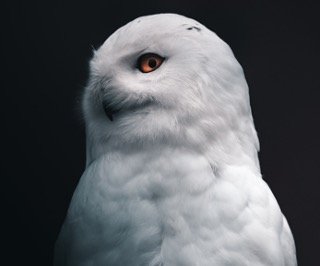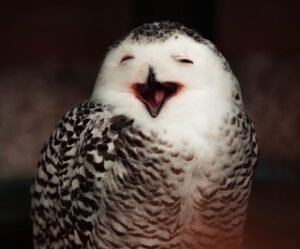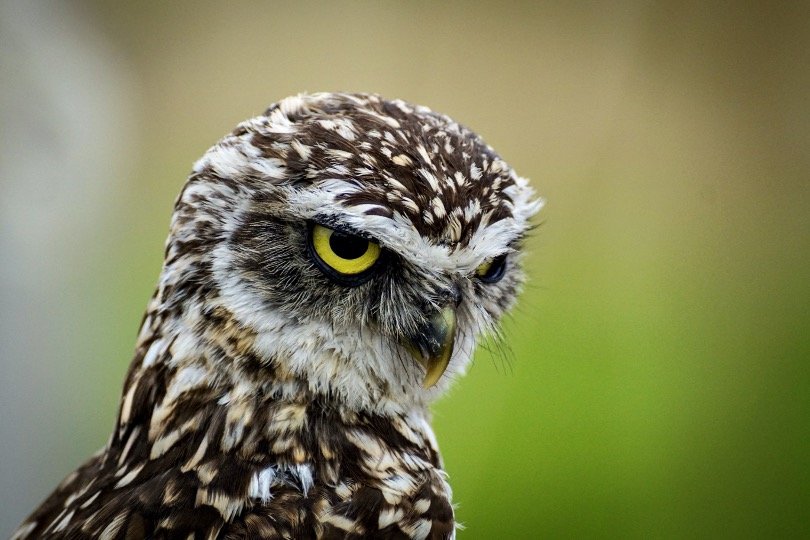
Why Do Owls Bob Their Heads?
Owls are among the most intriguing birds on the planet, and they have a lot to say. They have always piqued the interest of humans due to their secretive, quiet flight, and outlandish behavior.
When they move their heads up and down, they are engaging in one of the more bizarre activities that they exhibit.
This head-bobbing motion is frequently related with the individual’s attempt to remain awake. However, it is possible that it performs a much more vital function than simply maintaining alertness.
Do Owls Hoot During the Day? All You Need To Know
So, what is it about owls that causes them to bob their heads up and down? The following are six possible explanations for this phenomenon.
There are six main reasons why owls bob their heads.
1. The Mechanisms of Survival and Hunting
Owls are raptors that belong to the Strigiformes family of birds of prey. They rely on their excellent vision, sharply curved beaks, and hearing abilities to survive and reproduce. In addition, they are nocturnal predators, which means that they hunt largely at night and sleep during the daylight hours.
As a result, they have developed to have large eyes, which allow them to see clearly even in low light conditions. However, because the bird’s eyes are so large, it is unable to swivel them within the eye socket.
Furthermore, they are not completely spherical, which means that they are unable to move about to see around like humans.
In comparison to cones, they have a higher concentration of rod cells, which are light-sensitive. It is rod cells that are responsible for peripheral vision since they have a large field of view.
This implies that the owls are extremely sensitive to even the tiniest motions, which makes them extremely dangerous.
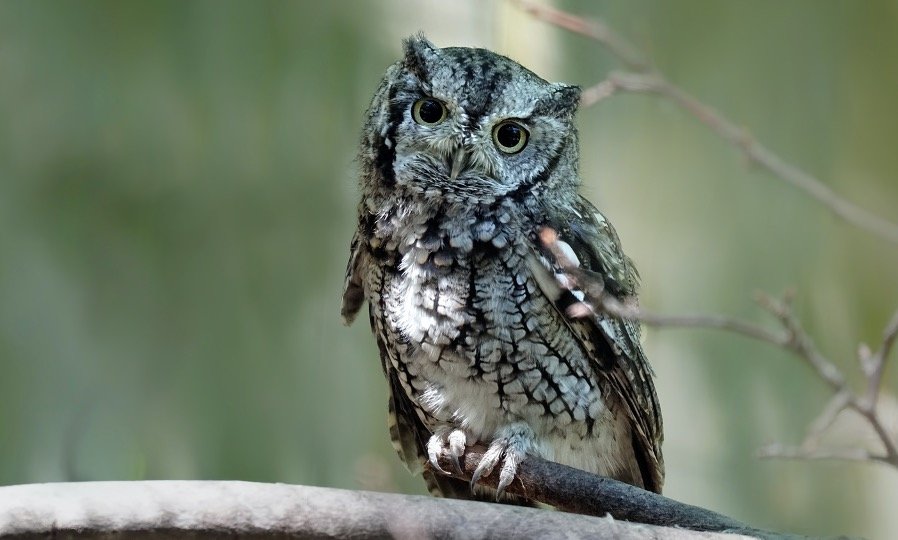
They make advantage of this sensory adaption to locate small creatures that may be concealed in long grass or wide open spaces. This results in owls losing their ability to move their eyes around the eyes in the same way that people do.
5 Simple & Proven Ways To Attract Owls To Your Yard
Their capacity to manually focus is likewise diminished, and they rely on their head movement to serve as a distance-perception technique. You can assume that this is the point at which the bobbing of heads is beneficial.
2. Improved Visual Acuity
In order to survive, owls must bob their heads up and down in order to acquire a clear view of what is going on in their environment. As well, it is a method of resolving distances and estimating the precise location of prey.
After successfully triangulating the position of its prey, the bird can swoop down like a stealth bomber and capture its food.
Another thing to note is that the head bobbing in juvenile owls is more dramatic and forceful than in adults. When they are just starting out, they move their heads more wildly and enthusiastically than usual.
These modest and precise head motions grow more refined and subtle as they gain more experience and maturity. This theory could provide evidence that head bobbing is particularly beneficial to young owls as they learn to recognize their surroundings.

3. To Locate Themselves In Space
Another reason why owls bob their heads is to help them become more familiar with the environment in which they reside. Their necks could also be twisted by turning their heads, but this would be more time-consuming and less accurate than using head bobs.
Owls keep their surroundings within their field of vision at all times by moving their heads up and down in a zigzag pattern.
It also makes it easier for them to land and take off from their aircraft. This is due to the fact that bobbing their heads helps them to determine how far or close a branch is from them in seconds.
15 Cutest Owls In The World
It is for this reason that an owl’s eyes are located on either side of its face, allowing it to better triangulate the placement of objects. While skipping from one tree branch to another, the head bobbing also helps them maintain their balance and agility.
Furthermore, as they roam about their surroundings, they keep track of everything by bobbing their heads constantly.
4. To Communicate With Other Owls
Owls are highly gregarious animals. Occasionally, mothers and their young ones will be seen together in the same nest in some species.
They frequently congregate in order to hunt and nurture their young. The vocalisations of owls are a variety of different types, and include barking, whining, shrieking, and hooting in order to interact with other owls.
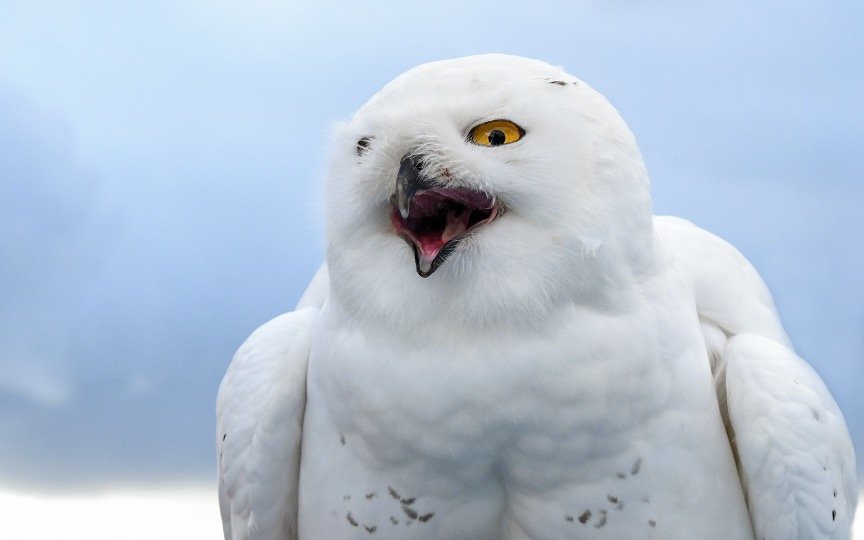
It also contains a lot of head bobbing. In fact, it can be so powerful that the bird appears to be having a seizure at various points. Head bobbing is not only beneficial for the two reasons stated above, but it also serves as a warning signal to other owls about potential danger or food supplies nearby.
Often, when an owl sees prey, it will bob its head downward at the same time. It could serve as a signal to other birds in the area that there is a meal waiting for them.
The bobbing of an owl’s head can also be a sign of anger or hostility from a possible predator.
In many cases, when another bird notices the head movement, it will stretch its wings and lift its tail, making itself appear much larger or more frightening. Occasionally, they will even screech in response to the threat in an attempt to scare them away.
5. Increased Sensitivity
The act of bobbing one’s head also aids an owl’s ability to concentrate on the sounds made by its prey, helping it to track them more readily when hunting in dark or congested environments such as the forest floor.
Owls have exceptional hearing and are able to detect the direction of the sound with pinpoint accuracy. They may accomplish this by swivelling their heads in order to distinguish between different sounds and to determine the direction of the prey.
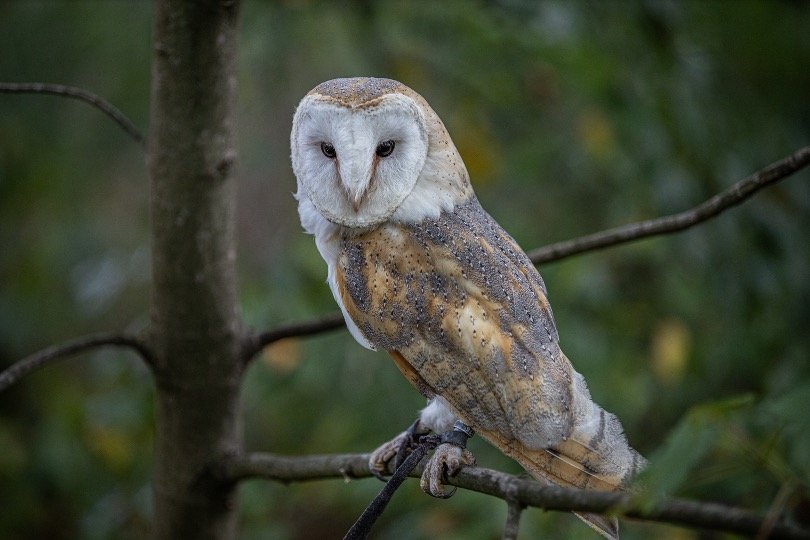
The sound of the prey, for example, could reach the right ear before the left if the prey’s sound was coming from the right. The animal bobs its head in order to pinpoint the direction in which it is moving. Owls have asymmetrical ears on their heads.
One of the ears is higher than the other, which implies that one ear may pick up sounds coming from a given direction before the other ear can.
The owl adjusts its head in such a way that both of its ears hear the same sound at the same time, and it is ‘triangulated’ into a specific location in space as a result.
6. To Keep Their Necks As Flexible As Possible
Another reason for owls to bob their heads is to maintain their necks as flexible as possible. They have 14 adaptable vertebrae in their necks, which allow them to spin their heads up to a full 270 degrees.
They are able to stare in all directions without having to move their shoulders as a result of this modification.
The head bobbing is a component of the technique they use to maintain their necks fluid and supple while performing. Their ability to instantly orient themselves around their surroundings without moving a single muscle on their body is greatly enhanced.

When it comes to newborn owls, bobbing is especially important because it helps them learn about their external surroundings while they are still too immature to fly. It also aids in the relaxation of their neck muscles.
It has been shown that owls’ head-bobbing can help regulate blood flow in their necks, which can help reduce muscle weariness.
When an owl is roosting or at rest, it is common for it to bobble its head. This manoeuvre also has the additional benefit of relieving the muscles at the back of its neck.
With the use of a blood-pooling system, the ability to rotate the neck becomes more efficient. When the neck rotation reduces blood circulation, the system collects enough blood to supply enough energy to the eyes and brain.
Take Away Message
When you combine this keen vision with powerful beaks and talons, as well as the ability to fly silently, you have yourself a fearsome predator. While the head-bobbing may appear to be a joke, it is actually a tactic that allows them to be more effective hunters.
Keep in mind that this is not a process that is exclusive to owls. Birds of prey such as hawks and falcons, among others, bob their heads as well.
